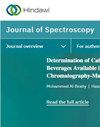Depth Semantic Segmentation of Tobacco Planting Areas from Unmanned Aerial Vehicle Remote Sensing Images in Plateau Mountains
IF 2.1
4区 化学
Q4 BIOCHEMICAL RESEARCH METHODS
引用次数: 10
Abstract
The tobacco in plateau mountains has the characteristics of fragmented planting, uneven growth, and mixed/interplanting of crops. It is difficult to extract effective features using an object-oriented image analysis method to accurately extract tobacco planting areas. To this end, the advantage of deep learning features self-learning is relied on in this paper. An accurate extraction method of tobacco planting areas based on a deep semantic segmentation model from the unmanned aerial vehicle (UAV) remote sensing images in plateau mountains is proposed in this paper. Firstly, the tobacco semantic segmentation dataset is established using Labelme. Four deep semantic segmentation models of DeeplabV3+, PSPNet, SegNet, and U-Net are used to train the sample data in the dataset. Among them, in order to reduce the model training time, the MobileNet series of lightweight networks are used to replace the original backbone networks of the four network models. Finally, the predictive images are semantically segmented by trained networks, and the mean Intersection over Union (mIoU) is used to evaluate the accuracy. The experimental results show that, using DeeplabV3+, PSPNet, SegNet, and U-Net to perform semantic segmentation on 71 scene prediction images, the mIoU obtained is 0.9436, 0.9118, 0.9392, and 0.9473, respectively, and the accuracy of semantic segmentation is high. The feasibility of the deep semantic segmentation method for extracting tobacco planting surface from UAV remote sensing images has been verified, and the research method can provide a reference for subsequent automatic extraction of tobacco planting areas.高原山区无人机遥感影像烟草种植区深度语义分割
高原山地烟叶具有散植、生长不均匀、混播/套种的特点。采用面向对象的图像分析方法准确提取烟草种植面积,难以提取有效特征。为此,本文依靠深度学习特征自学习的优势。提出了一种基于深度语义分割模型的高原山区无人机遥感影像烟草种植面积精确提取方法。首先,利用Labelme建立烟草语义分割数据集;采用DeeplabV3+、PSPNet、SegNet和U-Net四种深度语义分割模型对数据集中的样本数据进行训练。其中,为了减少模型训练时间,采用MobileNet系列轻量级网络替代原有四种网络模型的骨干网。最后,通过训练好的网络对预测图像进行语义分割,并使用平均交联(Intersection over Union, mIoU)来评估准确率。实验结果表明,使用DeeplabV3+、PSPNet、SegNet和U-Net对71幅场景预测图像进行语义分割,得到的mIoU分别为0.9436、0.9118、0.9392和0.9473,语义分割的准确率较高。验证了深度语义分割方法在无人机遥感影像中提取烟草种植地表的可行性,研究方法可为后续自动提取烟草种植面积提供参考。
本文章由计算机程序翻译,如有差异,请以英文原文为准。
求助全文
约1分钟内获得全文
求助全文
来源期刊

Journal of Spectroscopy
BIOCHEMICAL RESEARCH METHODS-SPECTROSCOPY
CiteScore
3.00
自引率
0.00%
发文量
37
审稿时长
15 weeks
期刊介绍:
Journal of Spectroscopy (formerly titled Spectroscopy: An International Journal) is a peer-reviewed, open access journal that publishes original research articles as well as review articles in all areas of spectroscopy.
 求助内容:
求助内容: 应助结果提醒方式:
应助结果提醒方式:


